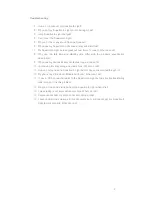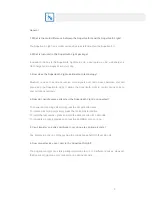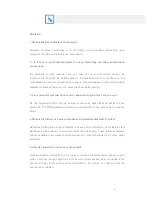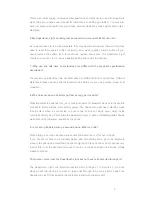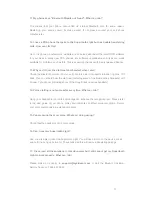
7
6. How far can my cell phone be from the Supertooth Light and still remain
connected?
The Supertooth Light will remain connected within a range of 10 metres (30 ft). Sound
quality may start to deteriorate after about 7 metres depending on your environment.
7. Can other electrical devices cause interference with Bluetooth?
Bluetooth technology employs a technique called ‘frequency hopping’ to constantly change
the frequency at which it sends data, thus reducing interference with wireless devices like
wireless LAN’s and cordless landline phones. However, noise interference can occur if the
Bluetooth device is used in close proximity with a microwave. Check if there are any such
devices in the surroundings, and if so keep the distance between the Supertooth Light and
such devices to at least 5 - 10m. Usually, any interference will only cause a slight crackling
sound. The frequency of Bluetooth is much higher than that of radio station bands.
8. If I cup my hand over a Bluetooth device the signal strength and quality suffers.
Why does this happen?
Bluetooth signals are radio waves and do not need line of sight to operate. But, radio waves
cannot travel through water and as the human body is made up of mostly water they cannot
travel through it. Therefore, your hand will create a barrier causing slight interference and a
loss of signal quality.
9. What Bluetooth cell phones can use the Supertooth Light headset?
To use the Supertooth Light the phone must support either headset or hands free Bluetooth
profiles. Some devices may only support data transmissions and not audio.
10. What is the difference between Bluetooth V1.2 and V2.0?
V2.0 is the current version of Bluetooth with Enhanced Data Rate (EDR) technology, with
data transfer rates of up to 3Mbps compared with 1Mbps in V1.2.
Note: All BlueAnt products are forward and backward compatible (Our V1.2 products can be
used with V2.0 phones and our V2.0 products can be used with V1.2 phones)
Summary of Contents for Supertooth Light
Page 1: ...Supertooth Light FAQ ...



